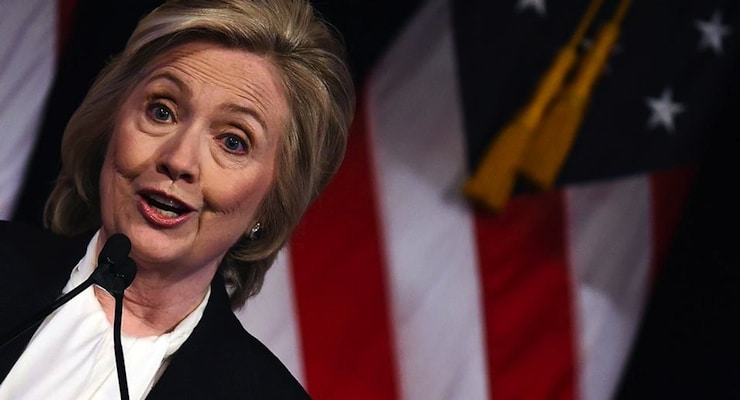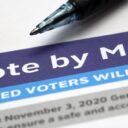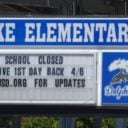

US Democratic presidential hopeful Hillary Clinton speaks outlining economic vision at the New School in New York on July 13, 2015. (Photo: JEWEL SAMAD/AFP/Getty Images)
New polling data conducted in the battleground states of Colorado, Florida, Iowa, Nevada, Ohio, and Virginia spell deep trouble for Hillary Clinton in 2016. While the PPD election projection model, which was hands down the most accurate model in 2014, never subscribes to the ill-advised philosophy of reading too much into early polling, fundamentals historically can present themselves pretty early in a cycle.
For Hillary Clinton, those fundamentals are pointing to some serious danger signs, despite head-to-head match-ups seemingly suggesting otherwise. Let’s go through the data piece-by-piece. It may get a little tedious at times, but I promise it will be worth the point.
Vox Populi polled 1670 likely voters in the aforementioned battleground states, where Clinton is underwater on favorability by a large 53 – 38 percent margin. Only 11 percent of respondents said the former secretary of state “Completely” shares their values, while 35 percent said “Not at all.” When adding partial answers — “on most issues” and “not on most issues” — she is on the outs with voters by a 54 – 40-percent margin. These questions speak to both the ideology of the electorate and the candidates ability to connect with voters, which presents a huge problem for the likely frontrunner.
In 2012, Gov. Mitt Romney suffered from low favorability and likability ratings throughout most of the cycle. Yet, as the election season entered the fall he turned that around. However, voters never thought he shared their values even if they agreed with him on the overall role of government, nor did they believe he cared about people like them. For Hillary, trust is perhaps even more concerning.
Thirty-nine percent “Strongly Agree” with the statement “Hillary Clinton will say or do anything in order to get elected president,” while just 20 disagree. Again, with partial answers, Hillary is underwater on the question by a 58 – 37 percent margin. Meanwhile, 56 percent either “completely” (42 percent) or “somewhat” (14 percent) distrust Hillary Clinton, juxtaposed to just 16 who say they “completely” trust her. On Benghazi, 58 percent either say she is “definitely” (37 percent) or “probably” (21 percent) trying to hide something about her actions during the Benghazi crisis, while just 13 percent say she is definitely not. In total, just 33 percent give Mrs. Clinton the benefit of the doubt, at least somewhat.
In fact, her numbers are so bad in the battleground states polled, that more voters would rather have Vice President Joe Biden (34 percent) serve as the next president than Hillary (30 percent). But here is the kicker. Much is made of her lead among potential or declared Republican candidates. At this point in the cycle, however, name recognition is largely the cause of these numbers. When polled against “the winner of the Republican nomination,” Hillary trails badly in both solid and soft (leaning) support, 50 – 42 percent in the tally.
We’ve seen this before. It’s a pattern going back much farther than 2014, but we will use it here to make the larger point.
In March 2014, I wrote Why Iowa Senate Poll Showing Braley Leading GOP Hopefuls Doesn’t Mean Anything in justification of the Iowa Senate race rating on PPD’s election projection model. It saw the danger for Rep. Bruce Braley even before he ever was caught on video belittling Iowa farmers. It’s worth going back to read, but the basic argument held that Braley had “greater name recognition, and independents and Republican-leaning independents are soft on support for his potential challengers, a common anomaly in primary polling.” The same was true throughout the states with competitive Senate races in 2014 and it is true of the 2016 presidential election during the nomination process.
In fact, Rep. Bruce Braley, former Sens. Mark Udall, Mark Begich and others had more room to grow their support respecting favorability ratings and name recognition compared with Hillary. Of course, a slew of other variables go into our election projection model, and those will ultimately help to determine which party controls the White House after President Barack Obama, including his approval rating. But, historically, presidential elections are decided on the fundamentals given each party nominates an acceptable, viable candidate during their nomination process.
Candidate strength cannot be understated. A fresh, new face could further damage Clinton’s campaign given that more voters than not say she represents the past, not the future. Even in this hyper-polarized political environment, each of the respective parties will get a solid floor of support with a flawed candidate. But we aren’t saying that doesn’t mean it won’t cost them the election. Given these numbers — and the averaged numbers for Hillary on the PPD Pollster Scorecard — we are saying she has the makings of a flawed candidate.






